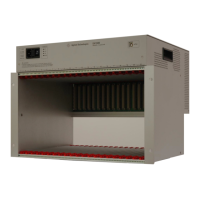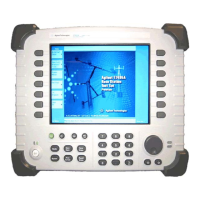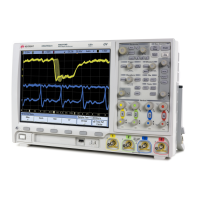58 Chapter 1
Troubleshooting
Troubleshooting Performance Test Failures
Troubleshooting Performance Test Failures
This information assumes the analyzer is making measurements but a
performance test is failing by a small margin, or only a few
measurements are failing. If most of the performance tests are failing,
go to "Isolating an RF, Analog IF, Digital IF, Reference, Synthesizer, or
CPU Problem" on page 39.
Step 1. Determine if an adjustment is causing the analyzer to fail the
performance test. Do the adjustments, if any, associated with the failing
performance test.
Step 2. Determine the probable faulty assembly, and the next step to perform,
by comparing the performance test results to Table 1-4.
Table 1-4 Performance Test Failures
Failing Performance Test Adjustment Probable Faulty Assembly Next Step
Displayed Average Noise
Level (DANL)
None A17 RF
A12 analog IF
A10 digital IF
Step 5
Attenuator Accuracy at 50
MHz
None A17 RF
Amplitude Linearity None A10 digital IF
A12 analog IF
Step 3
Absolute
Amplitude Accuracy
Frequency Response (Flatness)
Internal 50 MHz Calibrator
a
A12 analog IF
A17 RF
A10 digital IF
Step 4
Third-Order Intermodulation
Distortion
None A17 RF
A12 analog IF
A10 digital IF
Step 3
Gain Compression None A17 RF
A12 analog IF
A10 digital IF
Step 3
Residual Responses None A17 RF
A12 analog IF
A19 synthesizer
Step 5
Spurious Responses Synthesizer Adjustment Number 1 A19 synthesizer
A18 reference
A17 RF
A12 analog IF
Step 6
Residual FM None A19 synthesizer
A18 reference
Step 3
Phase Noise Synthesizer Adjustment Number 2 A19 synthesizer
A18 reference
Step 3
Internal 10 MHz Frequency
Reference
Internal 10 MHz
Frequency Reference
a
A18 reference

